Reviewed by Deborah Menkart
Review Source: Teaching for Change
Book Author: Suzanne Del Rizzo
This picture book about a child and his family fleeing the destruction of their beloved town in Syria features exquisite mixed-media art.
Sami, the protagonist, is worried about the survival of his pet pigeons as his family makes the long trek to a refugee camp.
After a few pages, such as the one below, I planned to recommend this book for young children.
But then, on the two-page centerfold, the author and publisher undid the power of the book. Sami paints his worst fears — and they are represented by black paint taking over the two-page spread and his birds.
Throughout the rest of the book, the smoke that destroyed Sami’s town is grey. So, why does the author/illustrator switch to black to represent the smoke when Sami paints? As if the black color is not enough, Sami says, “Black paint stains my hands and clothes. I run to escape the blackness.”
No child of any color should be taught that black is bad. Let alone read the line, “I run to escape the blackness.”
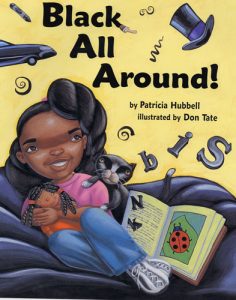 It was probably sub-conscious on the part of the author. But reading this book to young children will perpetuate the dangerous and erroneous message to the next generation that black is bad.
It was probably sub-conscious on the part of the author. But reading this book to young children will perpetuate the dangerous and erroneous message to the next generation that black is bad.
It is my sincere hope that the author and publisher will revise the image and text on the two-page centerfold spread. [See response in the comments below from the publisher and author, and a follow-up response by the reviewer.]
In the meantime, an excellent antidote to this damaging myth about blackness is the Lee & Low picture book Black All Around by Patricia Hubbell, illustrated by Don Tate. Read this book instead.
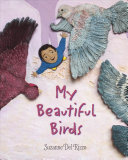

My Beautiful Birds by Suzanne Del Rizzo
Published by Pajama Press on 2017-03
Pages: 32
ISBN: 9781772780109
Publisher's synopsis: Behind Sami, the Syrian skyline is full of smoke. The boy follows his family and all his neighbors in a long line, as they trudge through the sands and hills to escape the bombs that have destroyed their homes. But all Sami can think of is his pet pigeons--will they escape too? When they reach a refugee camp and are safe at last, everyone settles into the tent city. But though the children start to play and go to school again, Sami can't join in. When he is given paper and paint, all he can do is smear his painting with black. He can't forget his birds and what his family has left behind. One day a canary, a dove, and a rose finch fly into the camp. They flutter around Sami and settle on his outstretched arms. For Sami it is one step in a long healing process at last. A gentle yet moving story of refugees of the Syrian civil war, My Beautiful Birds illuminates the ongoing crisis as it affects its children. It shows the reality of the refugee camps, where people attempt to pick up their lives and carry on. And it reveals the hope of generations of people as they struggle to redefine home.
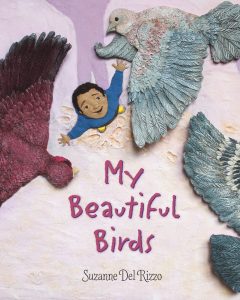
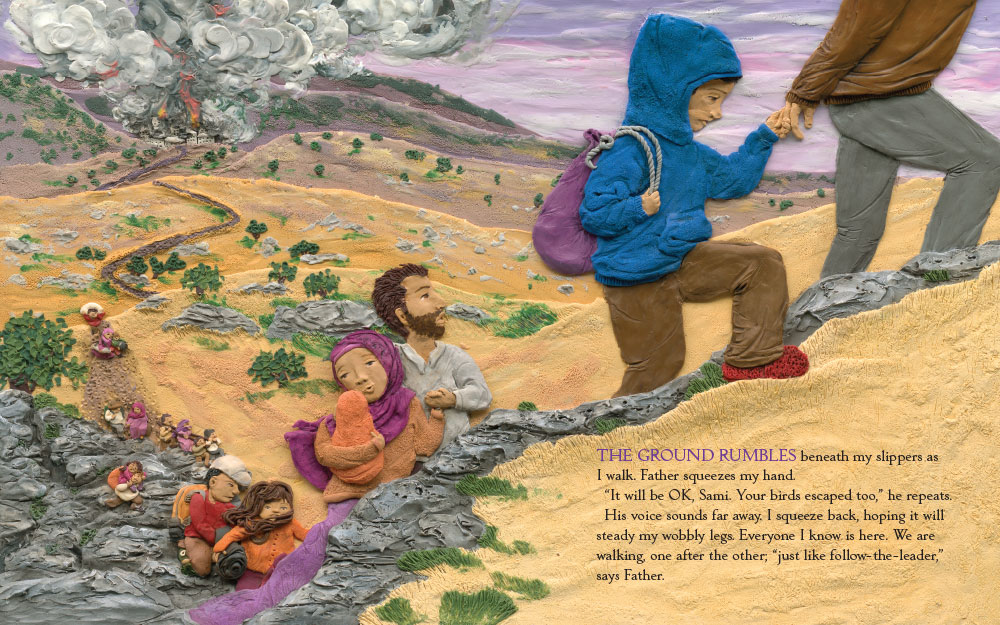
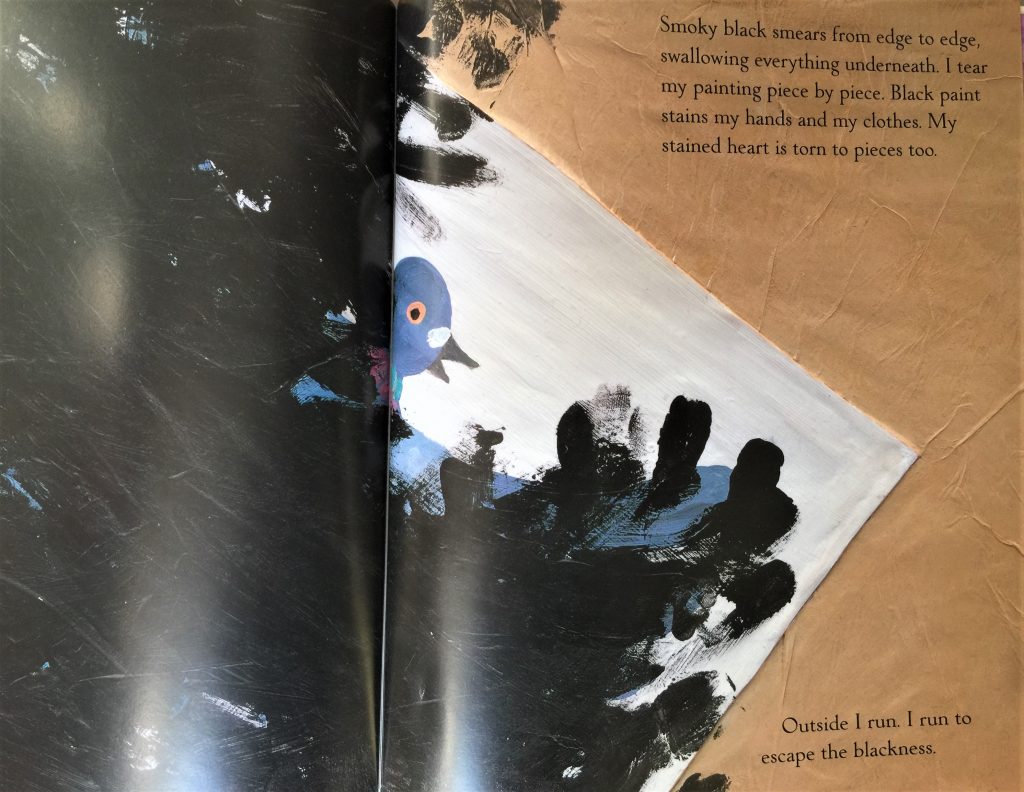
We appreciate your feedback, and the work you do reviewing and curating books. Your efforts make the publishing industry better, more aware, and more inclusive.
This is the first criticism My Beautiful Birds has received, and so we are considering it carefully. While we do feel strongly about accurately representing the experience of children with PTSD who smear black over their paintings, it isn’t necessary for the text to underscore the idea of blackness as bad. We are open to the idea of reworking the line, “I run to escape the blackness.” It’s unlikely that we will have the opportunity to go back to press on this book anytime soon, as we have just reprinted a large quantity (due to heavy demand), but if it continues to sell strongly we may be able to address this issue down the road.
Again, thank you for the important work you do.
Thank you for the opportunity to have this conversation. Here is a statement from the author-illustrator about her research into childhood PTSD and the real-life experiences of refugee children like Sami.
“Originally in my research for the book I came across a few articles that mentioned how art therapy was being introduced to Syrian refugee children, many of whom were suffering from PTSD. Over and over it was noted that these traumatized children would paint over their images with black, out of angst, frustration, and fear. I used this idea and imagery in my book to convey those feeling in the child protagonist. I felt it was a more effective to convey the protagonist’s PTSD by illustrating him smearing black paint all over his painting and running outside in a moment of despair. It is no way suggesting that the colour black is bad. It is merely one of the colours he used to mix his pigeon-grey paint, and was an actual situation that many arts therapy teachers had witnessed with young Syrian refugee children.”—Suzanne Del Rizzo
Here are links to some articles that Suzanne has found relevant to this story:
“How Syrian Children are Drawing and Using Art Therapy to Heal the Trauma from War”
https://www.vice.com/en_us/article/xd5wva/syrian-children-are-drawing-to-heal-the-trauma-from-war
“Israa’s Story: A Journey Through Art”
https://www.internationalmedicalcorps.org.uk/syrian-teacher-zaatari
We understand that there has been a problematic history in western literature of using white to symbolize good and black to symbolize evil. We are actively working on improving our editorial process to notice and rework instances of this. However, in the case of My Beautiful Birds, the author-illustrator is depicting a real-life experience of many children who have experienced trauma, and who find it difficult to express themselves in color.
My thanks to the publisher for taking the time to respond. While it is likely that some children used black paint, others probably crumpled the paper, while others used other colors. The author and illustrator can choose which example to depict in the book. I hope another example, not one that reinforces the notion that “black is bad” can be used in future editions.